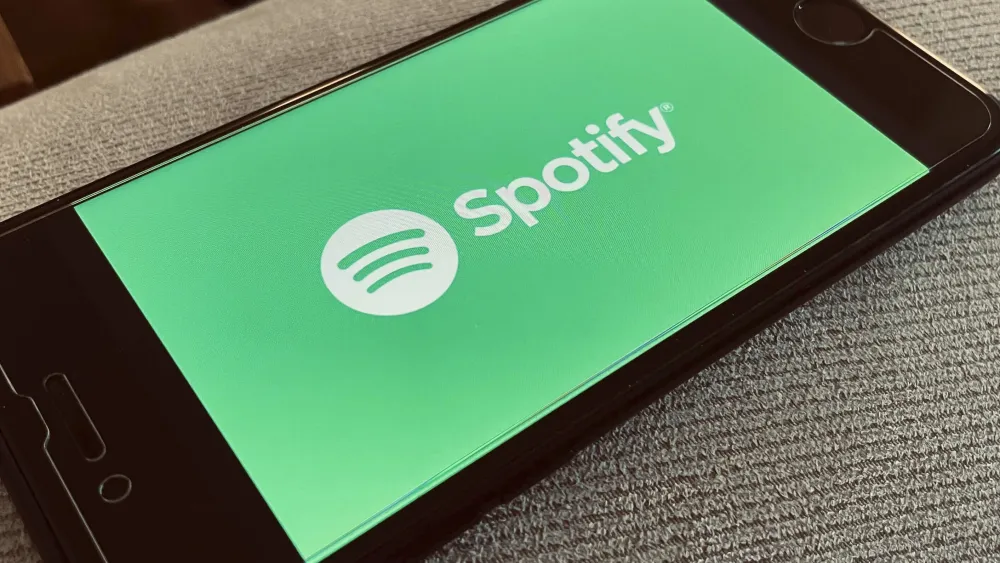Receiptify is a quick and easy-to-share listening history receipt that lists the top tracks during set periods, but only some features will work properly with an Apple Music subscription. One of the benefits of using a streaming service is viewing which songs are listened to most often, and visualizing the changes in a user’s music tastes.
An easy way to view the changes is through end-of-year recaps, like Apple Music Replay and Spotify Wrapped. However, it might be more beneficial to see these changes over smaller periods — and more often. That’s where third-party websites like Receiptify come into the picture. Receiptify can create a receipt of a user’s listening habits that can be quickly shared and viewed at any time.
To create a receipt-style record of a user’s music listening history, navigate to the Receiptify website on a smartphone. The homepage will show three login options for Receiptify: Spotify, Last. fm, and Apple Music. The login process is required to access the music listening data associated with a given account, but Receiptify’s privacy policy reassures users that their data is not being stolen or shared.

Apple Music users should select the red button labeled ‘Log in with Apple Music,’ and complete the login with an Apple ID. Some users may be asked to verify this with two-factor authentication, depending on their iCloud settings. After logging in, tap ‘Allow’ on the Access Request page to permit Receiptify to access Apple Music data.
If Receiptify doesn’t work after logging in, it’s usually a result of pop-up windows being blocked on the browser being used. Here’s how to enable pop-ups for Safari and Chrome:
Safari:
- Open the iPhone Settings app
- Tap ‘Safari’
- Turn off the toggle next to ‘Block Pop-ups’
Chrome:
- Open Chrome app
- Tap the profile picture in the top-right corner
- Scroll down to ‘Content Settings’
- Tap ‘Block Pop-ups’
- Turn off the toggle on the next page
Once pop-ups are enabled, try logging into Apple Music again from the Receiptify website.
After the Apple Music login process is complete, a Receiptify receipt will be created showing the user’s listening history in a clean, receipt-style format. This can be easily saved or shared to social media by pressing the ‘Download Image’ button directly underneath the receipt graphic.
The image will download as a file, so a pop-up window will appear asking the user if they want to view or download the image. Selecting ‘View’ will open the image in the default browser, while selecting ‘Download’ will save the image to the Files app. If a user is struggling to find where the Receiptify receipt was saved, check the Files app and look in the ‘Downloads’ section.
Why Receiptify Might Not Work Correctly with Apple Music
Receiptify might not work exactly as expected with an Apple Music account due to the way that music listening data is collected by Apple. Currently, the streaming service only records ‘Heavy Rotation’ history, which is used to create a playlist of often listened to music. There is no defined period used to refine this data, so Receiptify is unable to create detailed receipts for specific date ranges.

Essentially, Apple Music only provides all-time listening data, while Spotify offers more granular insights. So Receiptify can generate Spotify receipts from the past month, 6 months, year, or all-time. But Apple Music receipts will only show a user’s top tracks of all time.
The User Experience Across Platforms
Though Receiptify can collect data from multiple music streaming platforms, the user experience isn’t identical across Apple Music, Spotify, and Last. fm. It works by connecting to the respective streaming service to access listening history data from connected accounts.
Additionally, it supports Last. fm, a separate service dedicated to accurately tracking listening history and trends in a user’s music taste. The Receiptify user experience with Spotify and Last. fm is stronger when compared to Apple Music, but the latter still provides an intuitive visualization of a user’s all-time most played music.
While Apple Music receipts are limited to all-time insights, Spotify receipts can showcase listening trends over the past month, 6 months, year, or all-time. Last. FM support provides the most robust Receiptify experience, as it draws listening data from across platforms to build detailed listening profiles.
So in summary:
- Spotify Receiptify receipts offer great timeframe flexibility
- Last. fm Receiptify receipts provide the most holistic music history
- Apple Music Receiptify receipts are limited to all-time top tracks
Despite some limitations with Apple Music integration, Receiptify still delivers a clean and shareable visualization of a user’s most listened-to music. It acts as a shortcut to view Apple Music Replay data without having to wait until year-end.
The Benefits of Using Receiptify
Several benefits make Receiptify a useful supplemental service for Apple Music and other streaming platform users:
- Showcases Music Preferences: It serves as a bridge between streaming libraries and social circles, offering a unique way to showcase music preferences, discoveries, and memories associated with specific songs or playlists.
- Cross-Platform Compatibility: Receiptify is designed to seamlessly integrate with various platforms, making it easily accessible to iOS, Android, and web users alike.
- Insights into Listening Habits: It allows users to easily visualize their top tracks on Apple Music, Spotify, and Last. fm, providing helpful insights into their music tastes and listening habits over specific periods.
- Share Listening History: Users can share their listening history receipts on social media platforms, offering a fun and engaging way to give friends a snapshot of their favorite music.
- Digital Music Scrapbook: Receiptify acts as a digital scrapbook for music experiences, allowing users to look back at their musical journey, relive favorite moments, and cherish memories associated with specific songs or playlists.
How to Keep Apple Music Receiptify Songs Forever
One limitation of Apple Music Receiptify receipts is that they only include songs currently in a user’s Apple Music library. If an Apple Music subscription ends in the future, those songs will no longer be accessible. Luckily there is a workaround to download the songs from a Receiptify receipt for offline listening even after unsubscribing.
The solution is to use a dedicated Apple Music converter tool to download the tracks and save them as unprotected audio files. DRmare Apple Music Converter is a highly rated converter that makes this process simple. It can download any Apple Music track and convert it to unprotected formats like MP3, FLAC, AAC, M4A, and more.
To download and preserve Apple Music Receiptify songs forever using DRmare:
- Open the Apple Music app and add receipt songs to the library
- Launch the DRmare app and click ‘Add Files’
- Select receipt songs from the Apple Music library
- Click ‘Convert’ to download and convert tracks
- Find converted audio files in the ‘Converted’ section
- Listen anytime without Apple Music!
The benefit of this method is that the downloaded songs can be kept forever, shared with friends, and listened to at any time – even without an active Apple Music subscription.
FAQs about Using Receiptify with Apple Music
Q:1 Is Receiptify accurate for Apple Music?
A: Yes, Receiptify connects directly to Apple Music’s servers to access listening data, so the receipts are accurate reflections of a user’s top tracks.
Q:2 Can I use Receiptify on my iPhone?
A: Yes, Receiptify has a mobile-optimized website that works great on iPhones and Android phones alike. Simply visit on your device’s browser.
Q:3 Why does Receiptify only show all-time Apple Music data?
A: Apple Music currently provides more limited data than Spotify, so Receiptify can only generate all-time top tracks for now.
Q:4 Is there an alternative to Receiptify for Apple Music?
A: Apple Music Replay is the official year-end listening history recap from Apple. It provides similar data to Receiptify.
Q:5 Is it safe to connect Receiptify to my Apple ID?
A: Yes, Receiptify only accesses listening history data and their privacy policy guarantees user data is kept private and not shared.
Conclusion:
Receiptify is a handy supplemental service for visualizing Apple Music listening trends over time. While limited to all-time data, it still provides an easy way to share and view personal music stats. With the ability to download and keep songs using a converter, Receiptify can help Apple Music users access their favorite tracks even after unsubscribing. For those seeking new ways to explore their listening habits, Receiptify integrates nicely with Apple Music profiles.

1 thought on “How To Use Receiptify for Apple Music, Organize Apple Music with Receiptify, All details Here”